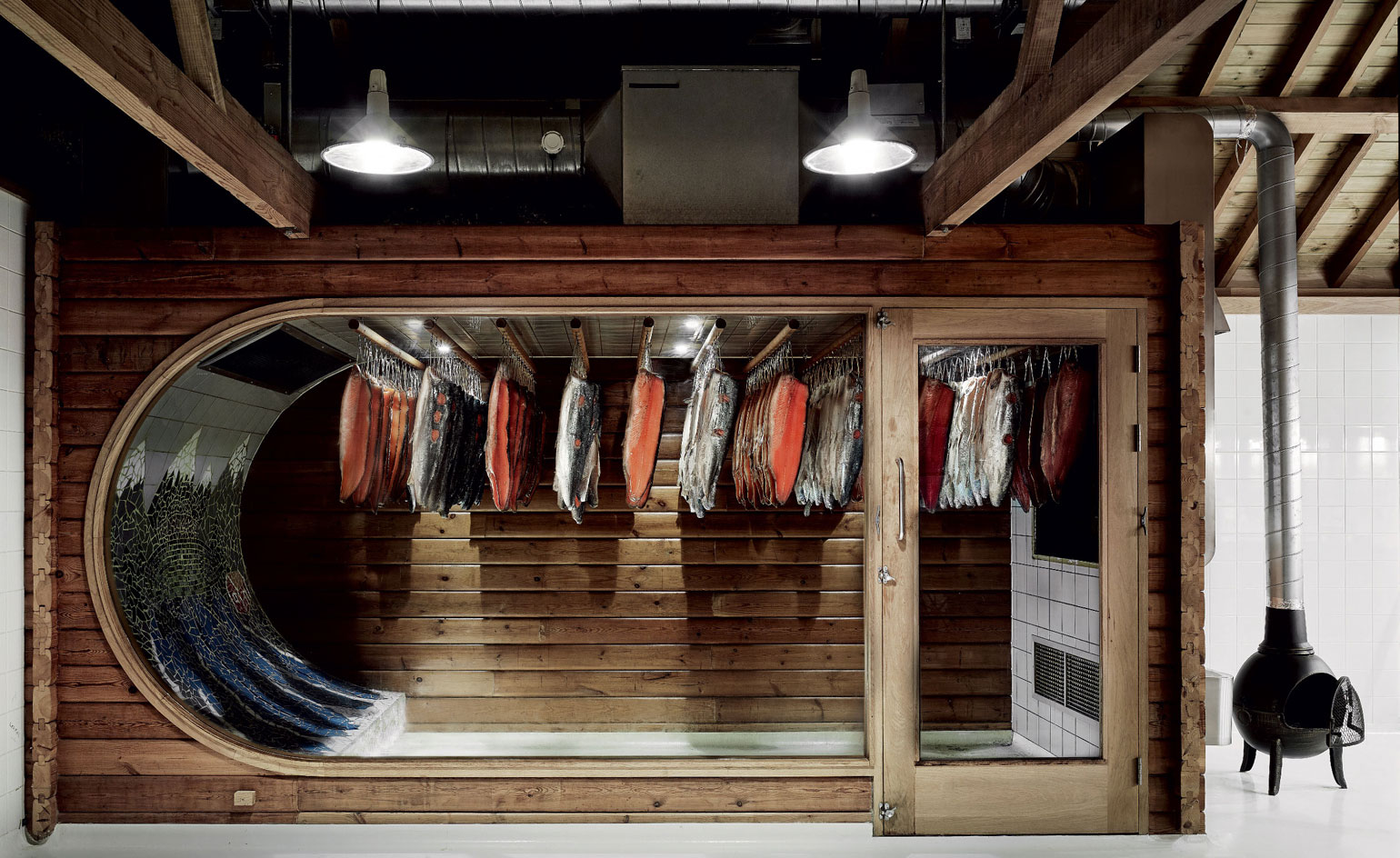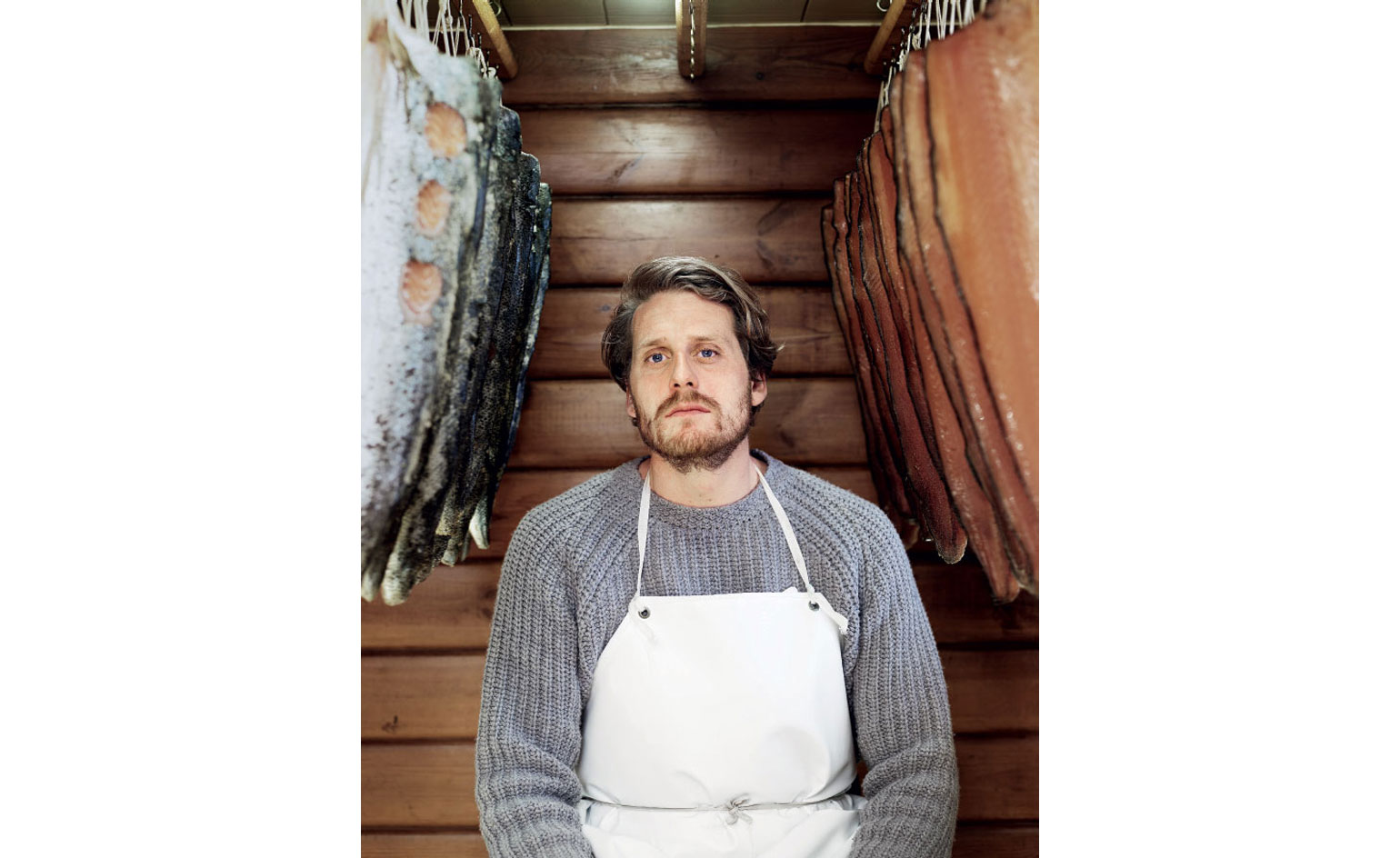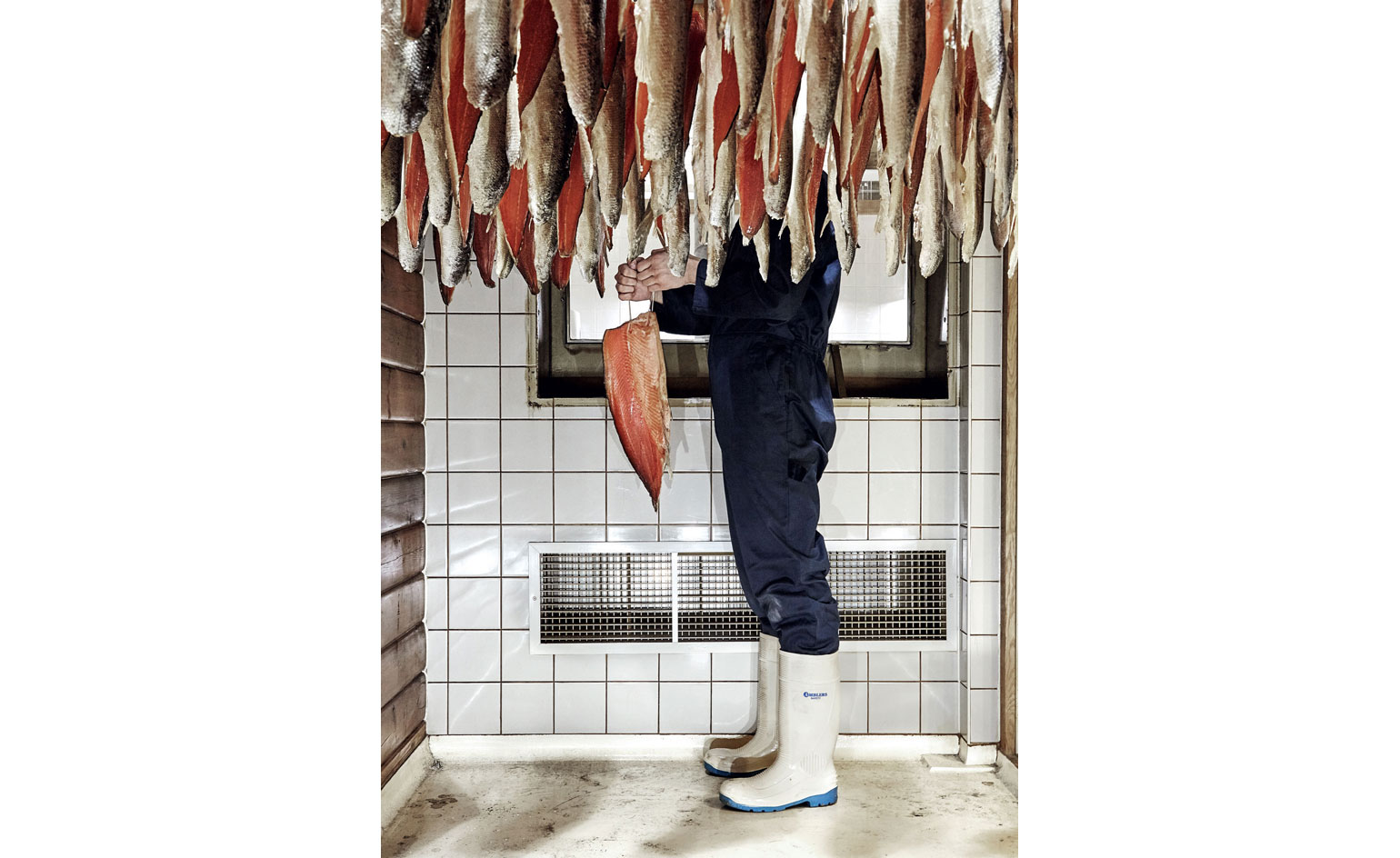Hang time: Norwegian smokehouse Hansen & Lydersen opens Cotswolds base

For the past six years, Ole Hansen has been smoking salmon in a small room located in an old printing warehouse in north London. He started his company, Hansen & Lydersen, as a sort of adventure that soon developed into a successful gastronomic enterprise, with regular customers that include chefs and sheikhs. As the company expands, he is now setting up a new production facility, allowing him to supply larger quantities of his Norwegian salmon and also develop his smoking techniques.
The new building is part of the extensive Daylesford farm in Gloucestershire, home to a group of craftsmen and artisans brought together by owner Lady Bamford, known for her philanthropy as well as her sustainable approach to food production. ‘I think this idea is brilliant: investing in a farm to show people the future of farming,’ is Hansen’s enthusiastic comment. Lady Bamford is also an investor in his company, a family venture started by Hansen’s great-grandfather in Norway in 1923 and abandoned by the third generation in the 1980s. UK-based Ole revisited the concept in 2009, after realising that his planned career in music would not give him the creativity and freedom he was after. ‘Surviving as an artist in London was going to be hard, so I saw this as something that would not only give me a living, but also the opportunity to travel and collaborate with other artisans.’
Previously, Hansen had enrolled in a sound design course at London’s Central Saint Martins, dabbled in graphic design and product design, and was about to start studying architecture when he decided to revive his dormant family company instead.
‘I never saw my grandfather’s smoking chamber, and my mother only vaguely remembers it, so I’ll always wonder if I got it right,’ he says. ‘But the salmon I make tastes very much like that which I ate during my childhood. The main idea behind my family’s way of smoking is to create a current [of air], which moves the salmon, in the hope that this will stimulate the protein and change its taste.’
Relentless research and experimentation are central to the business, and sticking to one product allows Hansen to painstakingly perfect his techniques. The smoking system is an interpretation of his family’s decades-old design, which Hansen has turned into a technological wonder.
The superstar of his smoking chamber is a largely unseen, complex, fully automated and iPad-operated system of pipes, a feat of engineering that makes Hansen very proud and allows him to control (and obsess over) every aspect of production. ‘You might think it’s just pipes,’ he explains, ‘but in fact it’s a delicate balance, and it’s about pushing the boundaries of design and engineering together.’ The fire is generated in a small furnace and the smoke carried through the maze of pipes, mixed with fresh air from outside.
The chamber, encased by slats of pine reclaimed from a swimming pool and assembled without screws, using a technique similar to that utilised in the building of chalets, is fronted by a glass wall that puts the carefully hung salmon on display. ‘Why would you want to hide it?’ is Hansen’s logic. ‘A big part of [Scandinavian] culture is about being able to visit the outdoors through the inside,’ he adds. The salmon is arranged for maximum visual effect while, at the side of the room, a mosaic by an artist friend is the only frivolous concession in the simple but striking space.
Designed around this production process, the new premises also include cabinets for salting (where temperature is controlled by techniques similar to those of the smoking chamber), a room for washing and filleting the fresh fish, a large polished concrete kitchen and Hansen’s office. The look throughout is a fine balance between Scandinavian functionality and creative fair – reflecting the mix of inventiveness and rigour that drives Hansen & Lydersen.
He may be a food specialist now, but architecture, design and craftsmanship are regularly combined in every aspect of Hansen’s work. ‘I don’t like putting things into compartments,’ he says. ‘I look at design as an open and free place to be.’
Hansen & Lydersen’s three-ingredient recipe
Salmon
Sourced from a family-run farm between the Norwegian Sea and the North Atlantic. Delivered to London three times a week, filleted using Japanese techniques and prepared within 48 hours.
Salt
From Guérande, in northern France, a seasoning hot spot favoured by the Vikings.
Wood
A mix of German beech, processed by a small Danish company, and juniper from Hansen’s brother’s farm in Norway.
As originally featured in the April 2015 edition of Wallpaper* (W*193)

Ole Hansen, owner of Hansen & Lydersen, in his smoking chamber

The fish is carefully hung for maximum visual impact during the smoking process
Wallpaper* Newsletter
Receive our daily digest of inspiration, escapism and design stories from around the world direct to your inbox.
Rosa Bertoli was born in Udine, Italy, and now lives in London. Since 2014, she has been the Design Editor of Wallpaper*, where she oversees design content for the print and online editions, as well as special editorial projects. Through her role at Wallpaper*, she has written extensively about all areas of design. Rosa has been speaker and moderator for various design talks and conferences including London Craft Week, Maison & Objet, The Italian Cultural Institute (London), Clippings, Zaha Hadid Design, Kartell and Frieze Art Fair. Rosa has been on judging panels for the Chart Architecture Award, the Dutch Design Awards and the DesignGuild Marks. She has written for numerous English and Italian language publications, and worked as a content and communication consultant for fashion and design brands.
-
 All-In is the Paris-based label making full-force fashion for main character dressing
All-In is the Paris-based label making full-force fashion for main character dressingPart of our monthly Uprising series, Wallpaper* meets Benjamin Barron and Bror August Vestbø of All-In, the LVMH Prize-nominated label which bases its collections on a riotous cast of characters – real and imagined
By Orla Brennan
-
 Maserati joins forces with Giorgetti for a turbo-charged relationship
Maserati joins forces with Giorgetti for a turbo-charged relationshipAnnouncing their marriage during Milan Design Week, the brands unveiled a collection, a car and a long term commitment
By Hugo Macdonald
-
 Through an innovative new training program, Poltrona Frau aims to safeguard Italian craft
Through an innovative new training program, Poltrona Frau aims to safeguard Italian craftThe heritage furniture manufacturer is training a new generation of leather artisans
By Cristina Kiran Piotti